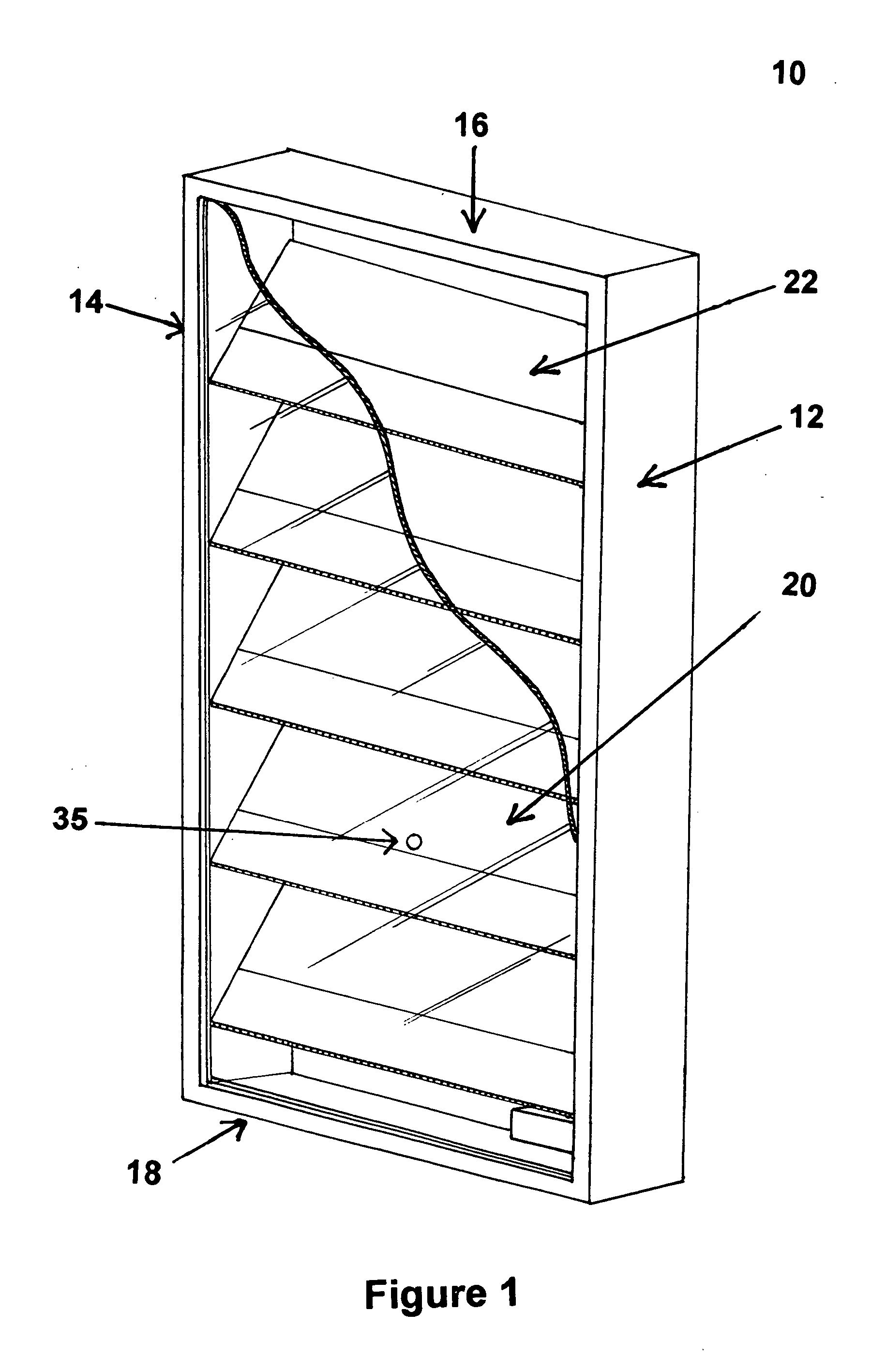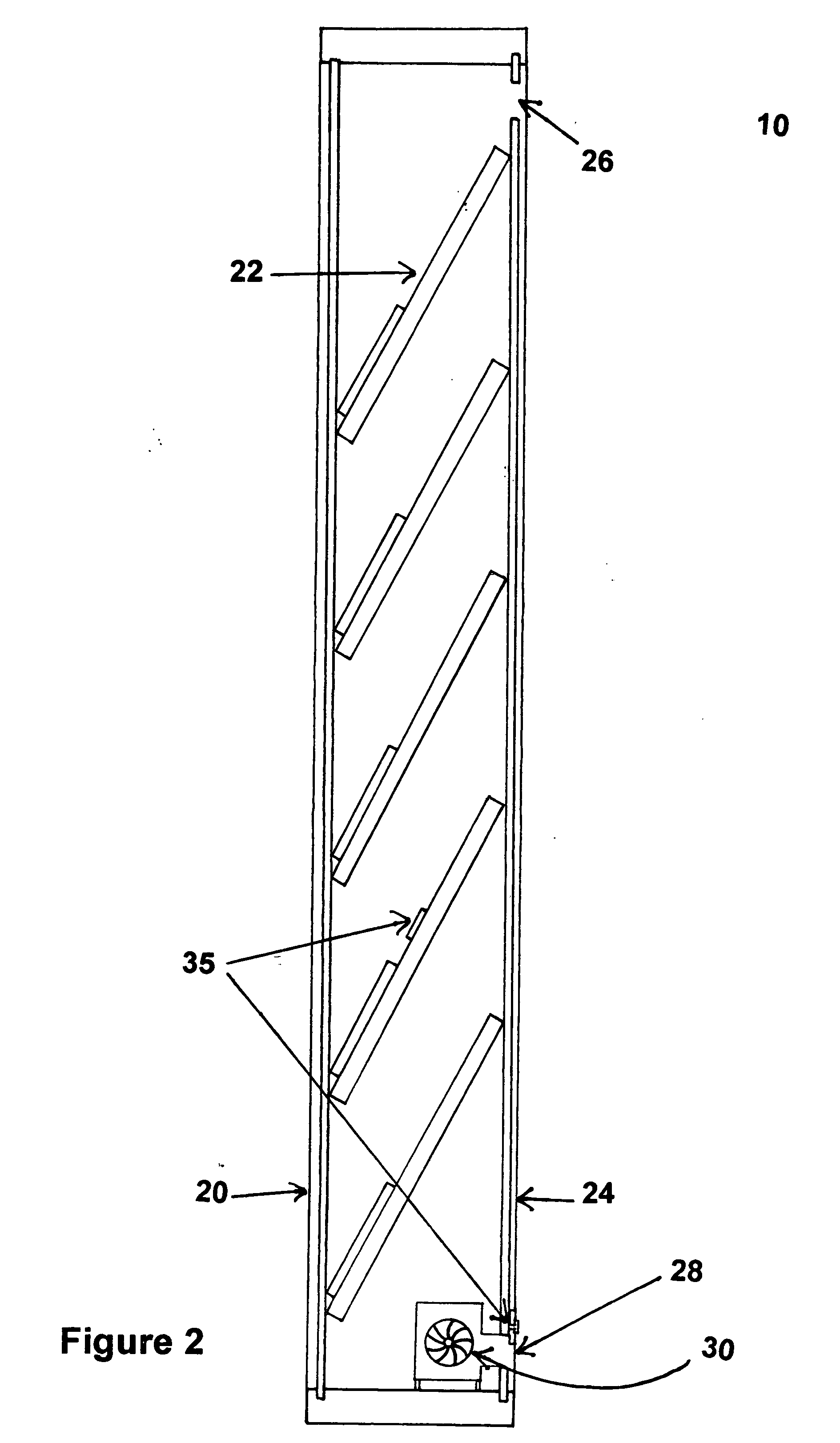Solar air heater
- Summary
- Abstract
- Description
- Claims
- Application Information
AI Technical Summary
Benefits of technology
Problems solved by technology
Method used
Image
Examples
example 1
[0038] This example shows the ability of the solar air heater of the present invention to generate heated air.
[0039] In this example, the solar air heater of the present invention was operated over a period of 24 hours. The ambient room temperature for the period in which the solar air heater of the present invention was operated varied between a low of 43.3° F. before the heater was used to a high of 63.3° F. after operation of the heater. The room was subject to no other heating devices. The graph in FIG. 5 shows the temperature of the air within the solar air heater of the present invention over a period of 24 hours in ° F. Once the heater was exposed to solar radiant energy the temperature of the air within the heater increased to 133° F. The fan of the heater was set to turn on at 130° F. The temperature of the heater increased three more degrees after the fan turned on until cool room air entered into the heater in sufficient quantities to lower the internal air temperature o...
PUM
 Login to View More
Login to View More Abstract
Description
Claims
Application Information
 Login to View More
Login to View More - R&D
- Intellectual Property
- Life Sciences
- Materials
- Tech Scout
- Unparalleled Data Quality
- Higher Quality Content
- 60% Fewer Hallucinations
Browse by: Latest US Patents, China's latest patents, Technical Efficacy Thesaurus, Application Domain, Technology Topic, Popular Technical Reports.
© 2025 PatSnap. All rights reserved.Legal|Privacy policy|Modern Slavery Act Transparency Statement|Sitemap|About US| Contact US: help@patsnap.com



